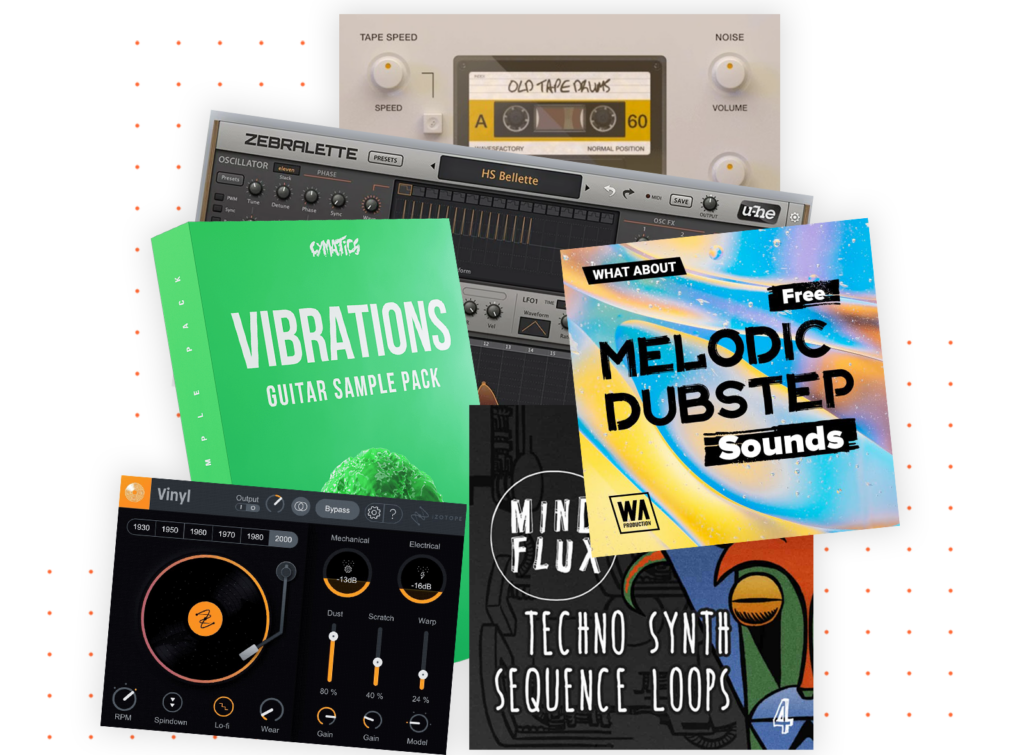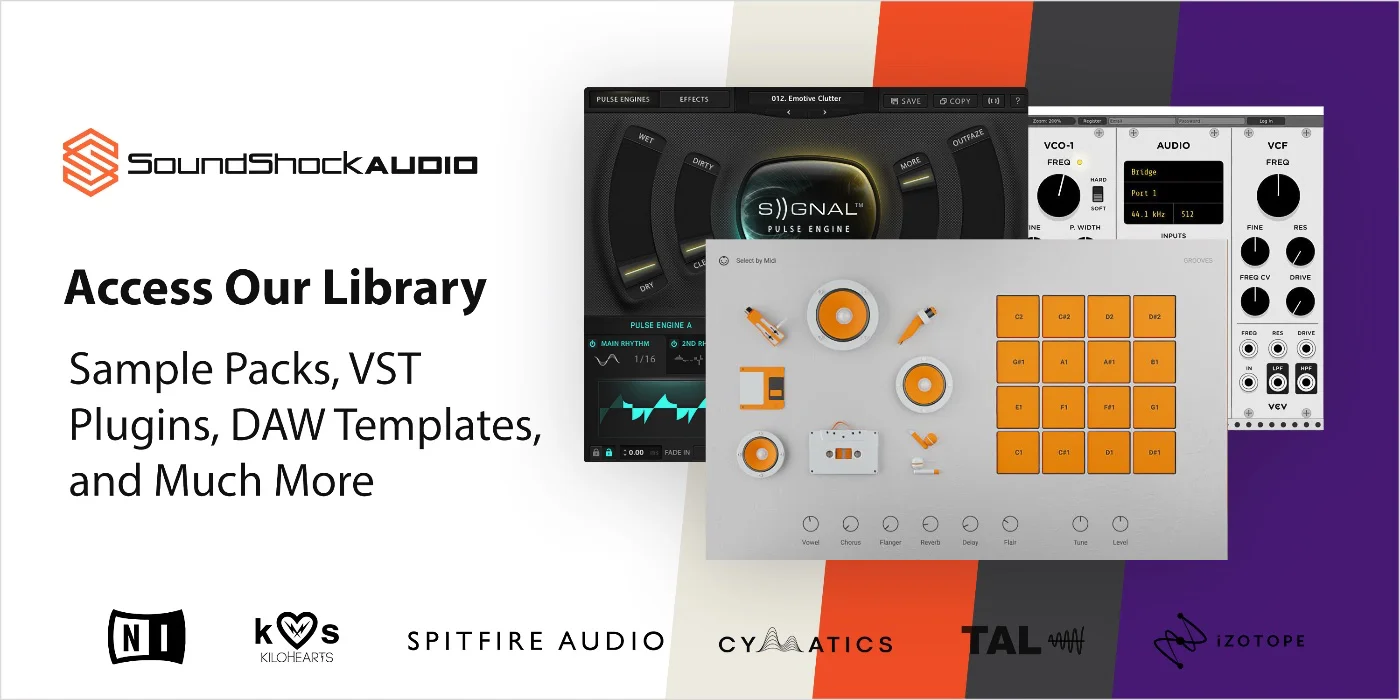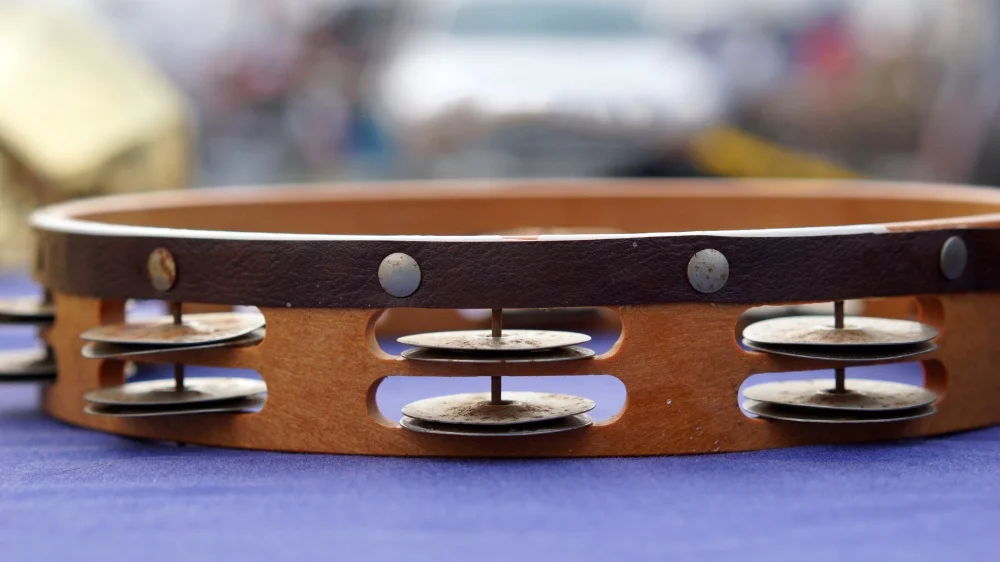In the world of music production, EQing plays a crucial role in shaping the sound of individual instruments and creating a balanced, polished mix.
Among the myriad of instruments, the tambourine often gets overlooked, but its unique timbre and rhythmic presence can add a distinctive flavor to various musical genres.
However, to make the tambourine shine in a mix, it requires careful EQing to ensure it complements rather than conflicts with other elements.
Why EQ Your Tambourine
Producers and engineers EQ tambourines for several reasons:
- To enhance the clarity and definition of the instrument in the mix
- To ensure it occupies its own frequency space without masking other elements
- To achieve a desired tonal character that suits the musical context
By carefully sculpting the frequency spectrum of the tambourine, mixing engineers can make it cut through the mix while maintaining a natural, balanced sound.
Get a Good Recording
Before EQing your tambourine, you need to make sure you have a good recording or elese EQing will be difficult.
Here are some quick recording tips:
- Choose a high-quality condenser microphone that can handle the tambourine’s dynamic range and frequency spectrum
- Position the microphone a few inches away from the tambourine to avoid overloading the capsule and to allow for some natural room ambiance
- Record in a controlled environment with minimal background noise and reflections
Starting with a good recording makes the EQing process more effective and efficient.
The Basics of EQing a Tambourine
EQ, or equalization, is the process of adjusting the balance of different frequencies in an audio signal.
The three main parameters of an EQ are:
- Frequency: measured in Hertz (Hz), it determines which part of the frequency spectrum is affected
- Gain: measured in decibels (dB), it controls how much a specific frequency range is boosted or cut
- Q factor: it determines the width of the frequency range affected by the EQ
When EQing a tambourine, a common starting point is to use a high-pass filter to remove any low-end rumble or unwanted noise below 100-200 Hz.
This helps clean up the mix and ensures the tambourine doesn’t interfere with bass-heavy instruments like kick drums or bass guitars.
Advanced EQ Techniques for Tambourine
Once the low-end is cleaned up, you can focus on shaping the character of the tambourine with more precise EQ adjustments.
Here are some techniques to try:
- Brightening the tambourine: Boost the high frequencies (around 5-10 kHz) to add presence and shimmer to the jingles. Be careful not to overdo it, as it can make the tambourine sound harsh or brittle.
- Taming harsh frequencies: If the tambourine sounds too “zingy” or is clashing with other high-frequency instruments like cymbals, try cutting around 2-4 kHz to smooth out the sound.
- Enhancing the body: To add warmth and fullness to the tambourine, try a gentle boost in the low-mids (around 200-500 Hz). This can help the drum part of the tambourine cut through the mix without sounding too thin.
Remember, the key is to make subtle adjustments and constantly refer back to the context of the entire mix.
What sounds good in isolation might not work as well when all the elements are playing together.
Expert Opinions
To get a better understanding of how professional engineers approach EQing tambourines, let’s analyze some well-mixed tracks and hear from the experts.
In the song “Uptown Funk” by Mark Ronson ft. Bruno Mars, the tambourine plays a prominent role in driving the groove.
The mixing engineer, Serban Ghenea, likely used a combination of high-pass filtering and high-frequency boosting to make the tambourine cut through the dense mix while retaining its crisp, lively character.
According to Grammy-winning engineer Manny Marroquin, “The key to mixing tambourine is to find its place in the mix. It should be present but not overpowering. I often use a high-pass filter to remove any low-end mud and then focus on the mid and high frequencies to make it shine.”
Common EQ Mistakes to Avoid with Tambourine
While EQing can greatly enhance the sound of a tambourine, there are some common pitfalls to watch out for:
- Over-EQing: It’s tempting to keep tweaking the EQ settings, but excessive processing can make the tambourine sound unnatural or disconnected from the rest of the mix. Trust your ears and know when to stop.
- Neglecting context: Always consider how the tambourine fits into the overall mix. What might sound good soloed might be too loud or too bright when played alongside other instruments. Regularly check your EQ decisions in the context of the full mix.
Additional Processing Tips
While EQ is a powerful tool, it’s not the only way to shape the sound of a tambourine.
Other effects can complement your EQ adjustments and help the tambourine sit better in the mix:
- Compression: Applying gentle compression can help control the dynamics of the tambourine and make it more consistent throughout the track. Be careful not to over-compress, as it can suck the life out of the performance.
- Reverb: Adding a touch of room or plate reverb can give the tambourine some space and depth in the mix. Use it sparingly to avoid washing out the sound.
- Panning: Experiment with panning the tambourine slightly off-center to create a wider stereo image and make room for other elements in the mix.
Remember, the goal is to make the tambourine sound like a natural part of the overall arrangement, not an isolated effect.

Access 4,000+ Music Tools
Access our entire library of music tools including sample packs, VST plugins, DAW templates, and much more.
Final Thoughts
EQing a tambourine is both an art and a science.
By understanding the unique characteristics of the instrument and how different frequency ranges affect its sound, you can use EQ to make the tambourine shine in any mix.
The key is to start with a good recording, make intentional EQ decisions based on the musical context, and always trust your ears.
With these resources and the techniques covered in this guide, you’ll be well on your way to achieving professional-sounding tambourine tracks in your mixes.
Download Music Production Tools on a Budget

Why spend hundreds or even thousands of dollars on music production tools when you can access them all for a low monthly fee at SoundShockAudio?
Subscribe now and start creating professional-sounding music without breaking the bank.
We’ve got everything from sample packs, to VST plugins, and more.
Need more help when it comes to EQing?
Check out these articles



hey, was reading through and wos wondering, have you got any tips for eq that helps tambourine blend better with low-fi genres? feels like it can get too jangly if that makes sense. nice article btw, Daniel.
TrixieMcGee, you might want to try rolling off a bit on the high end and boost mid-lows slightly, works for me in lo-fi tracks.
also, experiment with reverb to make it blend into the background more, just don’t overdo it or it’ll wash out.
Solid advice on getting that good rec. Always thought my tamb sounded off. gonna try changing up the EQ. Cheers, Daniel.
Love the section on advanced EQ, never realised how much depth there was to tweaking the tambourine sound, definitely gonna apply some of these! 🙂
eq a tambourine, eh? back in my day, we just hit it softer or moved it away from the mic. all this gear and still no groove, ha.
Interesting take on EQing tambourines but don’t you think it’s a bit overkill? Sometimes the natural sound is the best, especially with good mic placement.
Absolutely see your point, SynthNinja! Natural sound does have its charm, but some situations call for that extra control and polish. Thanks for sharing your thoughts!
ah yes, the infamous tamb EQ. Next you’ll be telling us how to mic a cowbell for that extra *ding* in our tracks haha
never really thought much about EQing a tambourine, usually just throw it in the mix and adjust volume. might give these tips a try tho, seems like they could make a difference.